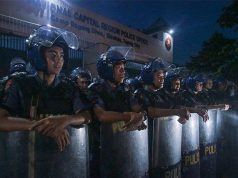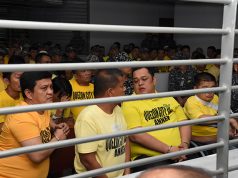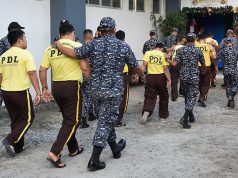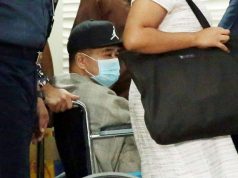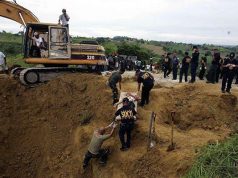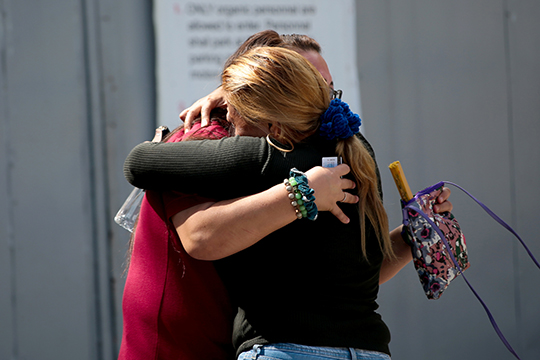
Judge Jocelyn Solis-Reyes, who handed out the long-awaited verdict of Datu Andal Ampatuan Jr. and his brother Zaldy Ampatuan, received praises online for her dedication to serve justice to the victims of the decade-old Maguindanao massacre.
On December 19, the Quezon City Regional Trial Court Branch 221 found the two prominent Ampatuan members, along with 28 other principal accused, guilty beyond reasonable doubt for committing 57 counts of murder. The siblings were sentenced to reclusion perpetua without parole.
Solis-Reyes was the presiding judge who made the landmark decision and finally ended the trial, which spanned three administrations.
She was not the judge who was assigned to handle this case — considered one of the worst incidents of election-related violence in Philippine history — in 2009.
The community of Filipino lawyers on Twitter pointed this out in their appreciation posts to her.
“We stan this lady, Judge Jocelyn Solis-Reyes for serving justice, not only to the victims but to all Filipinos,” Twitter user @KorteSupremo_ said.
“She accepted the case in 2009 after Judge Luisito Cortez turned down because of security reasons. She accepted the case but turned down police security,” the user added.
We stan this lady, Judge Jocelyn Solis-Reyes for serving justice, not only to the victims but to all Filipinos. She accepted the case in 2009 after Judge Luisito Cortez turned down because of security reasons. She accepted the case but turned down police security. ✨⚖️ pic.twitter.com/on5dA96Xmy
— Korte Supremo 👨🏻⚖️ (@KorteSupremo_) December 19, 2019
The social media page “Your Lawyer Says” also lauded Solis-Reyes’ decision, totaling 761 pages, for awarding separate damages to each victim.
Previous reports pointed out that 58 people were killed in the massacre. Only 57 counts of murder were charged because the body of the 58th victim was never found.
“The dispositive portion is 12 pages in itself. Awarding separate damages to different victims. The entire decision itself — pay attention to the upper right margin — is 761 pages,” user Your Lawyer Says tweeted. A screenshot of the decision was also attached.
The dispositive portion is 12 pages in itself. Awarding separate damages to different victims. The entire decision itself — pay attention to the upper right margin — is 761 pages. Yes, that’s SEVEN HUNDRED SIXTY ONE pages. pic.twitter.com/mXMgxZqJLq
— YLS (@YourLawyerSays) December 19, 2019
Aside from security risk, Your Lawyer Says highlighted the amount of paperwork and paper trail Solis-Reyes dealt with in the past 10 years.
“We all know how court dockets are clogged, and the size of this case will definitely drag her entire court. 197 were accused, 101 went on trial. 299 were presented as witnesses. Imagine the papers. Imagine the trial,” the user said.
On November 23, 2009, relatives of then Maguindanao gubernatorial candidate Esmael Mangudadatu and a convoy of 32 journalists were ambushed and killed in the municipality of Ampatuan in the province of Maguindanao. They were en route to file Mangudadatu’s certificate of candidacy
A total of 197 suspects were detained but only 101 went on trial throughout what was considered the “trial of the decade.”
Of these, eight have already died, including Ampatuan patriarch Andal Sr. Reports said that an estimated 80 suspects remain at large.
Journalist-turned-lawyer
Solis-Reyes initially aspired a job in the broadcast industry and took up journalism at the Lyceum of the Philippines.
She then studied law at the University of Santo Tomas and was admitted to the bar in 1987.
She entered government service as a public attorney from 1992 to 1995. She then worked as a public prosecutor until she was appointed as the presiding judge of municipal trial courts in Zamboanga and in Angeles, Pampanga in 2000.
After two years, she became the presiding judge in the Quezon City RTC Branch 221.
When the tragic incident happened, Cortez was supposed to take it, but he inhibited himself. He cited fear for his life and his family’s safety given the involvement of members of the influential Ampatuan political clan in Mindanao.
Former Chief Justice Reynato Puno re-raffled the case, and it was eventually given to Solis-Reyes despite the risks.
Over the years, Solis-Reyes had to sift through case records that reached 238 volumes, including testimonies of 357 witnesses, 65 records of stenographic notes, 165 volumes of trial records and eight records from the prosecution.
Because of such workload, she was previously blamed for the slow disposition of the case.
Following her verdict against the accused, the case could still go on until it becomes final and executory at the Supreme Court.




